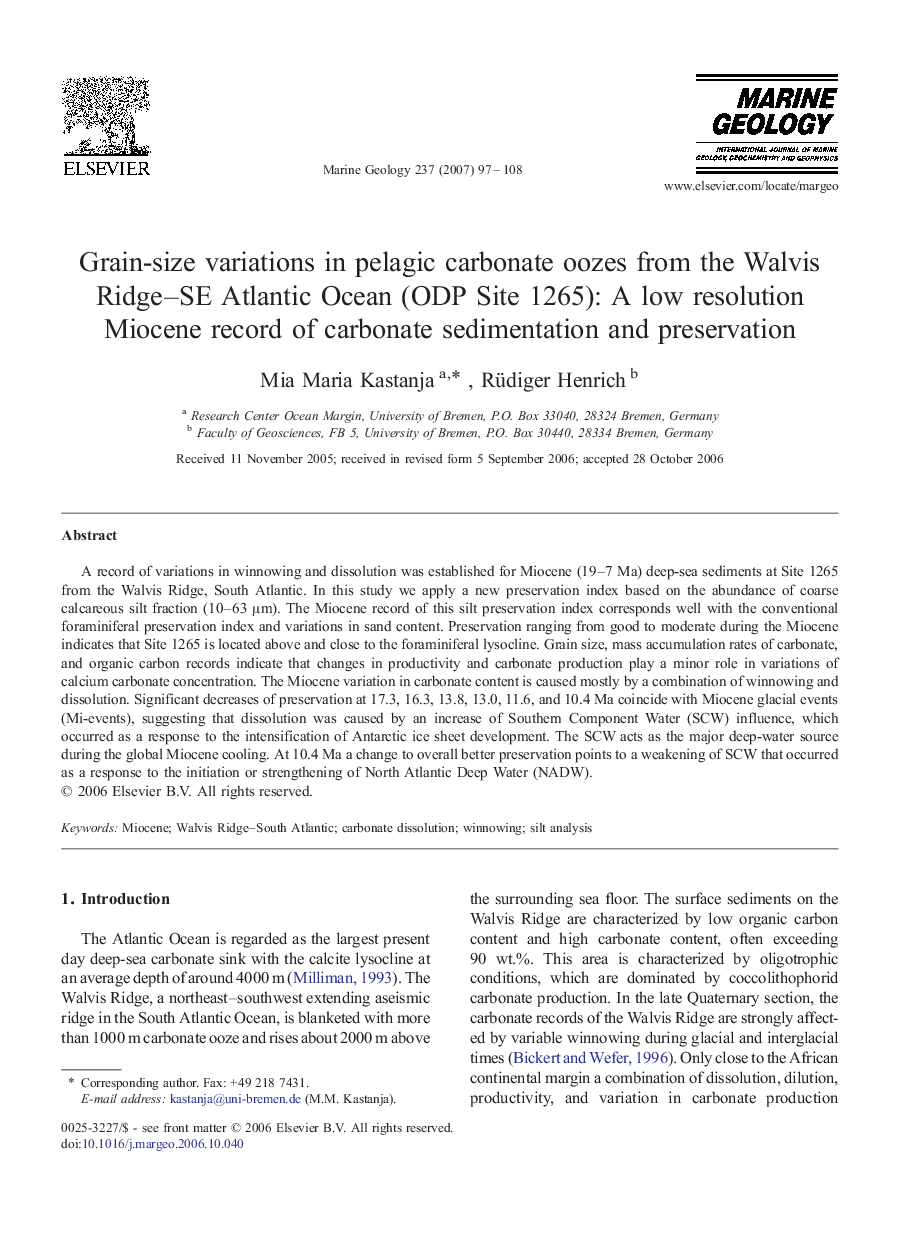| Article ID | Journal | Published Year | Pages | File Type |
|---|---|---|---|---|
| 4719606 | Marine Geology | 2007 | 12 Pages |
Abstract
A record of variations in winnowing and dissolution was established for Miocene (19-7 Ma) deep-sea sediments at Site 1265 from the Walvis Ridge, South Atlantic. In this study we apply a new preservation index based on the abundance of coarse calcareous silt fraction (10-63 μm). The Miocene record of this silt preservation index corresponds well with the conventional foraminiferal preservation index and variations in sand content. Preservation ranging from good to moderate during the Miocene indicates that Site 1265 is located above and close to the foraminiferal lysocline. Grain size, mass accumulation rates of carbonate, and organic carbon records indicate that changes in productivity and carbonate production play a minor role in variations of calcium carbonate concentration. The Miocene variation in carbonate content is caused mostly by a combination of winnowing and dissolution. Significant decreases of preservation at 17.3, 16.3, 13.8, 13.0, 11.6, and 10.4 Ma coincide with Miocene glacial events (Mi-events), suggesting that dissolution was caused by an increase of Southern Component Water (SCW) influence, which occurred as a response to the intensification of Antarctic ice sheet development. The SCW acts as the major deep-water source during the global Miocene cooling. At 10.4 Ma a change to overall better preservation points to a weakening of SCW that occurred as a response to the initiation or strengthening of North Atlantic Deep Water (NADW).
Related Topics
Physical Sciences and Engineering
Earth and Planetary Sciences
Geochemistry and Petrology
Authors
Mia Maria Kastanja, Rüdiger Henrich,
